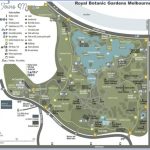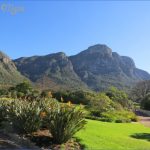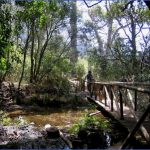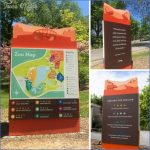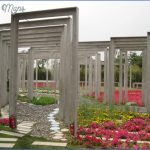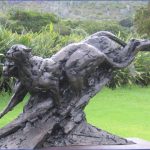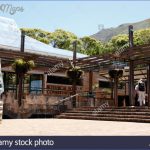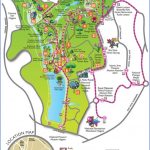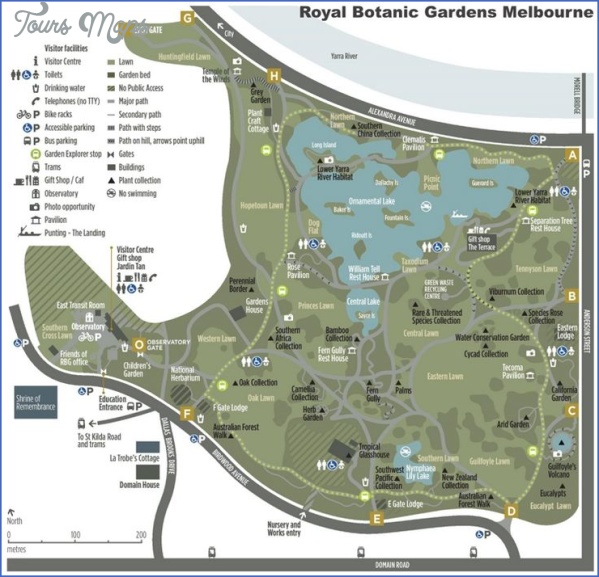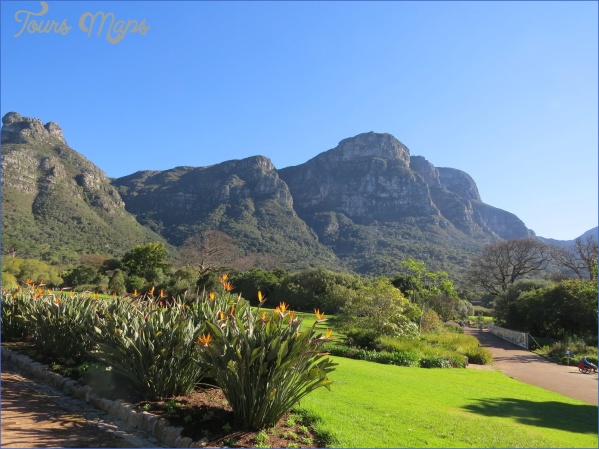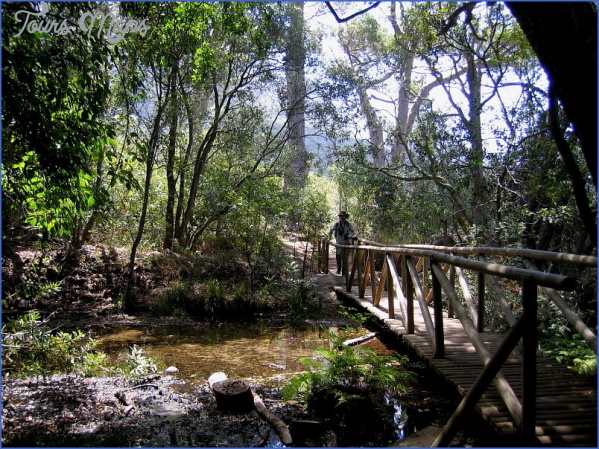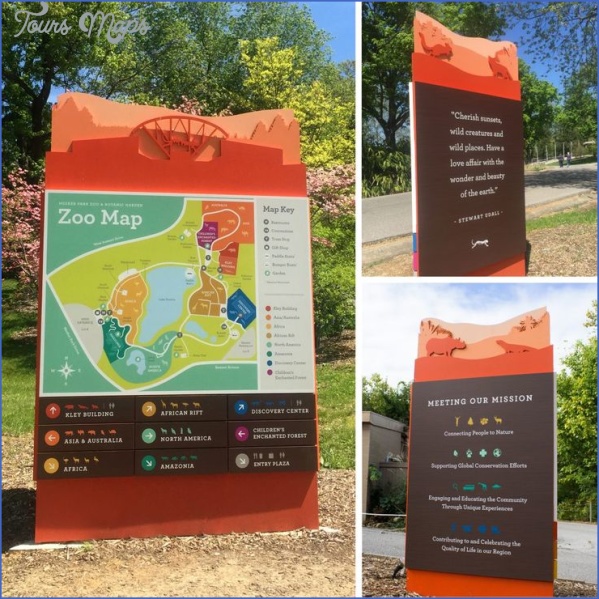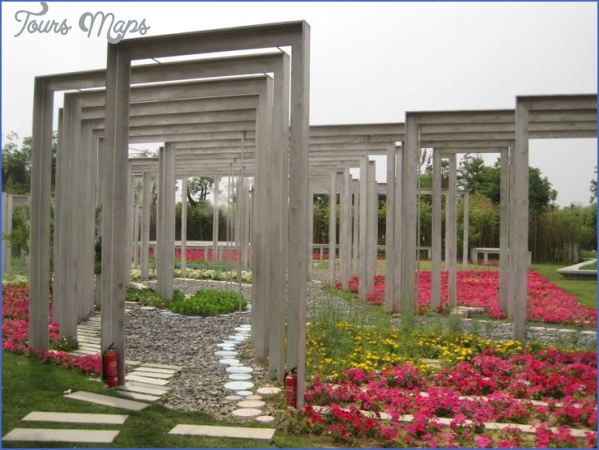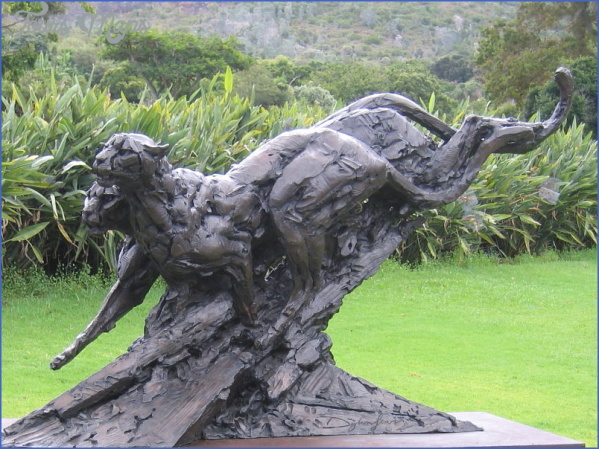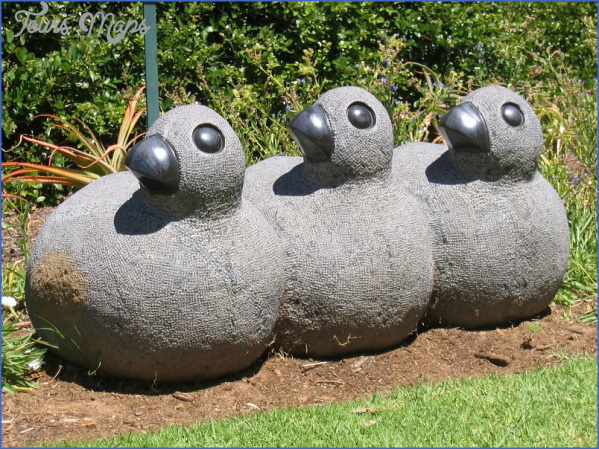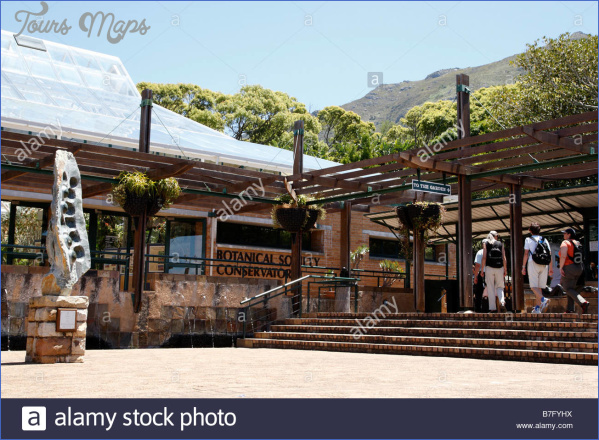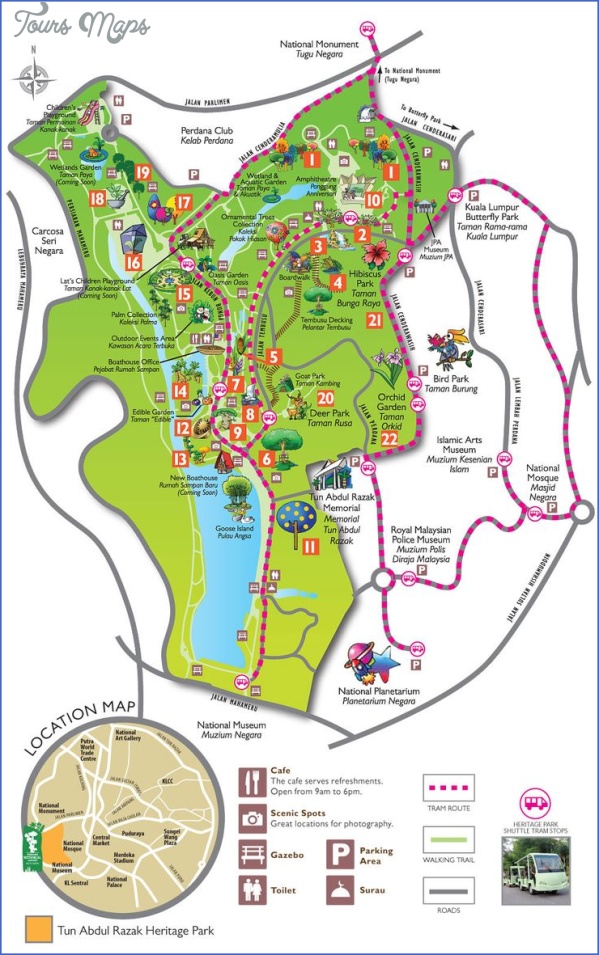The early 1990s witnessed an unprecedented growth in fundraising for Kirstenbosch. Contrary to the previous tradition of expecting government to finance every activity, the new leadership in the NBI, strongly supported by the Board, devoted much attention to the development of relationships with benefactors, new and old.
Like Gold Fields of South Africa Ltd, the Anglo American Corporation and De Beers Consolidated Diamond Mines Ltd had their roots in the industrial and business legacy of Cecil John Rhodes. When they were approached in 1995 for a substantial grant of R3.5 million for Kirstenbosch, the response was positive and immediate.
A key requirement was a bus to bring children from the schools of the Cape Flats townships to the Garden. From January 1996, the Kirstenbosch Bus, colourfully painted with flowers and happy children, has become a mobile ambassador for the Garden. Crossing the length and breadth of the Cape Flats – from Athlone to Gugulethu, Langa to Khayelitsha and beyond, on a daily basis – it brings school children, teachers and community groups to enjoy the wonders of Kirstenbosch. Today, some 300 000 kilometres of round trips between the Garden and Cape Flats later, the bus has made – and continues to make – the Garden accessible to communities once politically, economically and spiritually isolated from it.
Taking Kirstenbosch to the community
The Kirstenbosch Outreach Greening project has involved learners from over 100 schools in developing hands-on skills in gardening.
In initiating an outreach greening programme, it soon became obvious that the link between the Garden and communities needed to be channelled through the schools. The Kirstenbosch Nature Study School had worked this way, but the link was with the more privileged, predominantly white school community. A far larger, more urgently needy community existed in the townships. This was the new target, to be implemented without neglecting the schools already within the network.
In 1996 the first Black ‘Outreach Officers’ were appointed. Excellent candidates were selected. An early appointment was Xola Mkefe, whose experience as a teacher and whose skills as an inspirational speaker and a respected figure within the community provided early impetus to the programme. Mkefe saw his role as ‘bringing learners to Kirstenbosch, and taking Kirstenbosch to the community’. The activity’s popularity among schools led to the rapid growth of the programme, necessitating a constant search for additional funding. Special skills were needed to ensure the project’s success in the sandy, nutrient-poor soils of the Cape Flats, and in 1996 the first ‘Outreach Greening Horticulturists’ were appointed. By 1996, 11 school gardens had been established. In 1999, the Anglo American and De Beers Chairman’s Fund provided funds for the appointment of interns as part of the ongoing human capacity development objectives of the programme. In 2001, the Table Mountain Fund took over financing of the bus for several years, with fuel being provided by BP. At each step, the environmental education programme has found willing supporters from the corporate sector, the Botanical Society, WWF, the Table Mountain Fund and many individuals who have donated either time or funds.
Kirstenbosch National Botanical Garden Map With Counties Photo Gallery
Outreach Greening has a strong training element. It is, more than anything, an empowerment process. On-site consultations are followed by a series of workshops and training sessions, supported by handblogs and manuals published by Kirstenbosch and other SANBI gardens and partners. School teachers are trained first in how to plan and design a garden, in soil preparation, plant propagation and basic garden maintenance. Teams of learners are then guided in planting indigenous, water-wise plants that occur naturally in the area. The process is combined with teaching, which follows the formal school curriculum
By the turn of the millennium, Outreach Greening had become a core programme of the NBI. Major investments in poverty-relief projects within the government’s Expanded Public Works Programme provided unprecedented State funding for the type of work that Kirstenbosch had been doing for the previous decade. The ‘Greening the Nation’ programme was a R70-million project, funded via the Department of Environmental Affairs and Tourism and, from 2004 to 2009, by the SANBI’s Environmental Education directorate. It grew out of experience gained in the community-based projects on the Cape Flats, initiated in the first hesitant steps of the early 1990s. Between 1997 and 2011, 69 schools had been incorporated into and supported by Kirstenbosch’s Outreach Greening programme, with 27 more funded through the Greening the Nation project.
Growing greener people
‘My friends from Nyanga said when they were growing up they thought the mountain was a wall that separated the rich from the poor’ – a telling comment made by Zwai Peter, who grew up on the Flats himself and was one of the early champions of a brave idea that evolved into the SANBI Cape Flats Nature Partnership. The partnership has deep roots within the SANBI community initiatives, supported by a generous dose of serendipity, and some very special personalities.
The Cape Flats Nature Partnership has been an incubator of dozens of effective, but always challenging, often frustrating and occasionally disappointing environmental projects. The anchor to all of these has been the Edith Stephens Wetland Park (ESWP) (see page 160).
Kirstenbosch ecologist, George Davis, ever restless of mind and ready for action, came upon the Edith Stephens Nature Reserve in the early 1990s. Davis was exploring options to narrow the divide between verdant Kirstenbosch and the vast sprawl of informal settlements and low-cost housing that was emerging on the denuded Cape Flats. What followed is an inspiring story of ever strengthening partnerships between Kirstenbosch, the Cape Town Metropolitan Council, community groups, NGOs and private individuals.
Today, once neglected wastelands such as Edith Stephens Nature Reserve, Wolfgat Nature Reserve, Macassar Dunes Conservation Area, Rietvlei and Harmony Flats Nature Reserve have become centres of vibrant, community-driven environmental projects, supported by the Cape Town Metropolitan Council, the SANBI, the Table Mountain Fund and many others. In their comprehensive synthesis of the partnership (Growing Together: Thinking and Practice of Urban Nature Conservators), authors Bridget Pitt and Therese Boulle conclude: ‘These sites may seem like play parks compared to the huge pristine tracts of our national reserves … but these hard-pressed little foot soldiers are nature’s ambassadors and are critical to the future of conservation. Every year, a higher proportion of the population is born into city life. Most of these people will never set foot in a large national park … for these individuals, the nature conservation sites represent their only opportunity to have contact with nature. They are also the single places that can offer the spiritual and emotional healing which only nature can provide to highly stressed and impoverished communities.’
Maybe You Like Them Too
- Top 10 Islands You Can Buy
- Top 10 Underrated Asian Cities 2023
- Top 10 Reasons Upsizing Will Be a Huge Travel Trend
- Top 10 Scuba Diving Destinations
- World’s 10 Best Places To Visit

